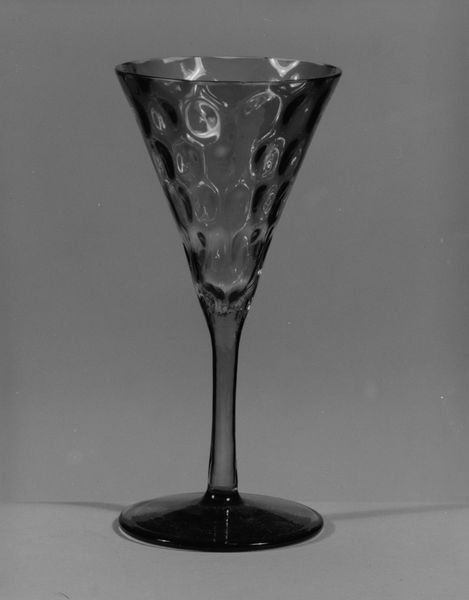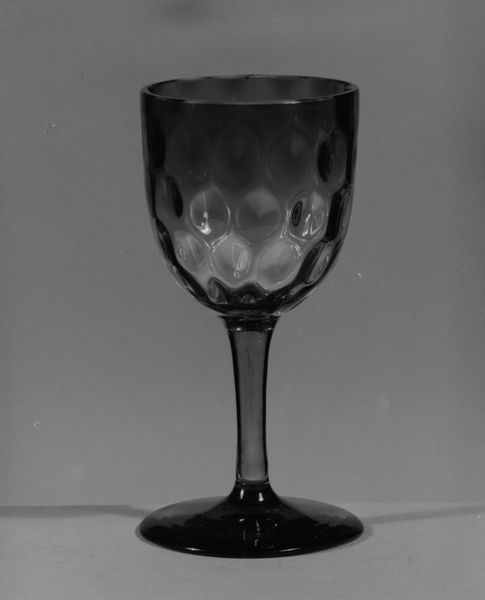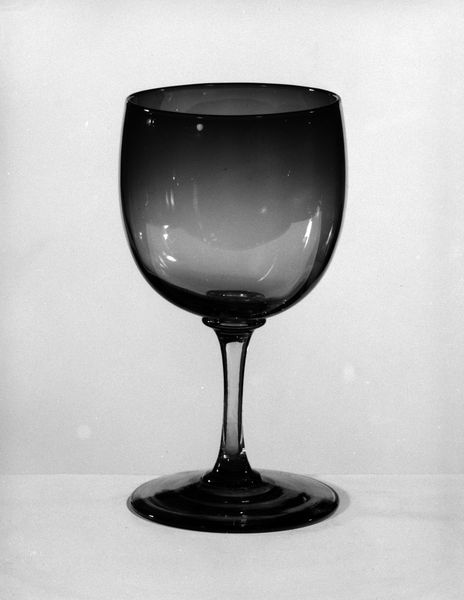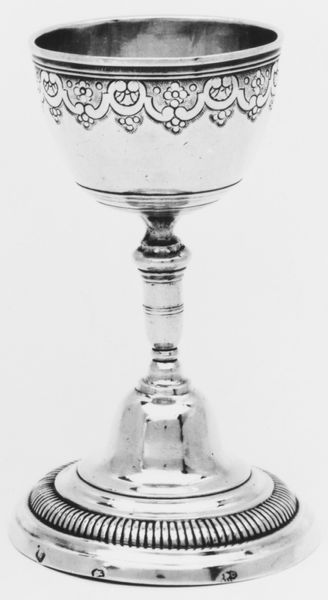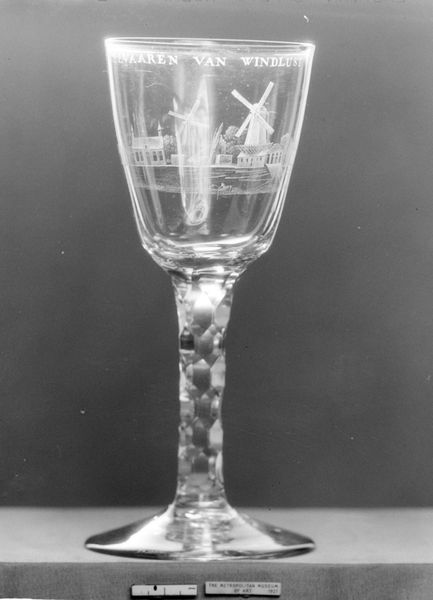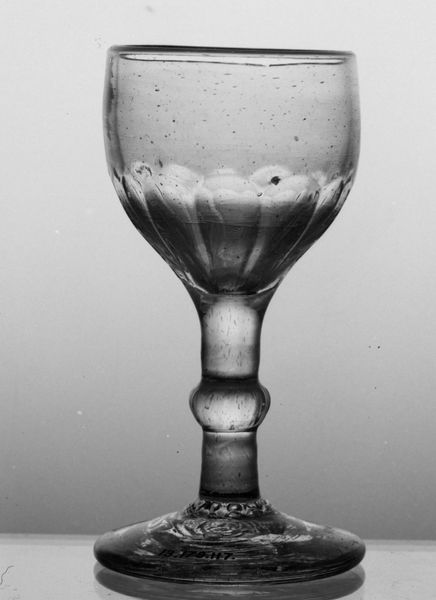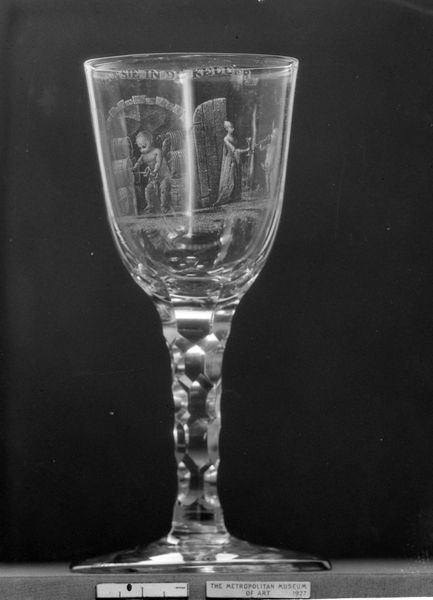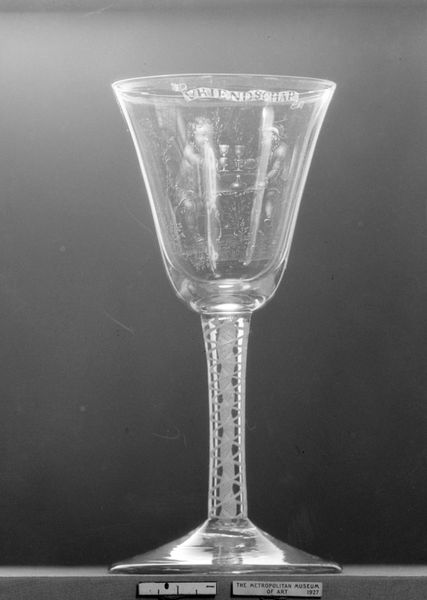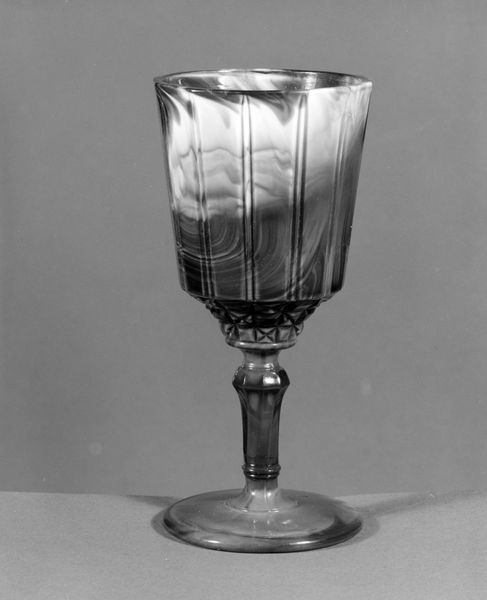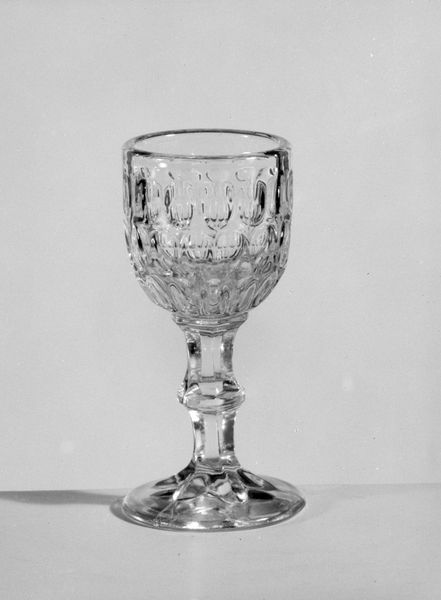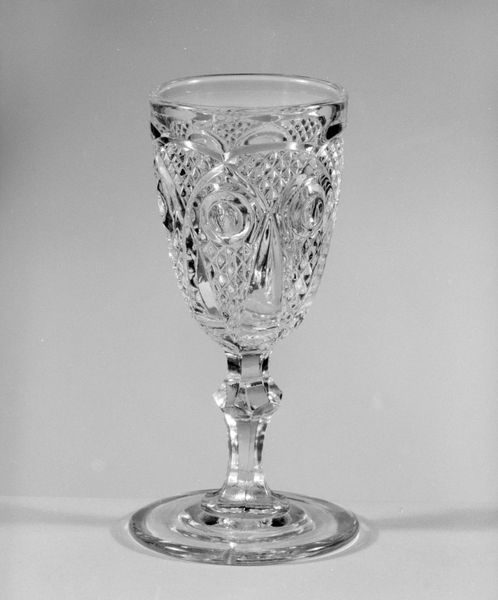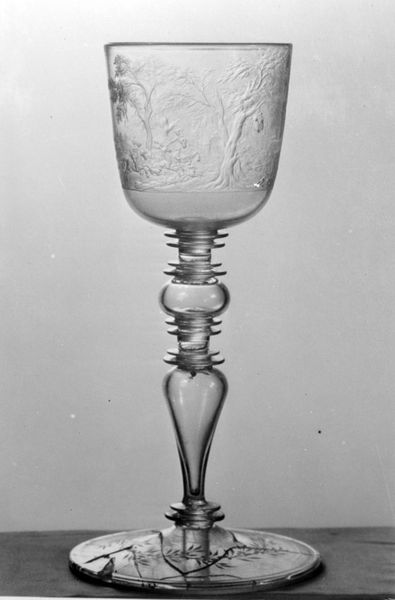
photography, glass
#
still-life-photography
#
photography
#
glass
#
macro photography
#
product photography
Dimensions: H. 4 11/16 in. (11.9 cm)
Copyright: Public Domain
Editor: Here we have a photograph of a "Wine Glass" made sometime between 1880 and 1888 by the New England Glass Company. It's displayed at The Met. The monochrome image has a wonderful clarity, showcasing the glass. How do you read the composition? Curator: The composition relies heavily on the interplay of light and form. The glass is rendered with stark contrasts, delineating its contours. Note the precise calibration of the grayscale, creating a sophisticated tonal range that models the object's three-dimensionality. The focus appears entirely on the glass itself, devoid of embellishment, underlining the essence of the object through pure, formal elements. How do you interpret the negative space surrounding the glass? Editor: Well, it feels... purposeful? It's not just "nothing," but somehow adds to the weight of the glass itself. Is that deliberate? Curator: Indeed. The restrained background directs the eye, serving to amplify the formal presence of the glass. There is also a tension in the glass itself. The solid, dark footing rises to become the transparent bowl. Are you able to view the geometry as progression rather than just shape? Editor: Yes, I think so! Now I see that the progression, or maybe transformation, contributes a type of narrative... or a potential one? Curator: Precisely. That is a direct reading of the material properties, shaped and composed for viewing. Therein lies its communicative power. Editor: I never considered how form and material could construct such a dialogue! It really adds to how I’ll perceive photographic work from now on. Curator: It's rewarding when careful attention to form reveals deeper understanding. It emphasizes that art isn’t just about what's depicted, but how.
Comments
No comments
Be the first to comment and join the conversation on the ultimate creative platform.
